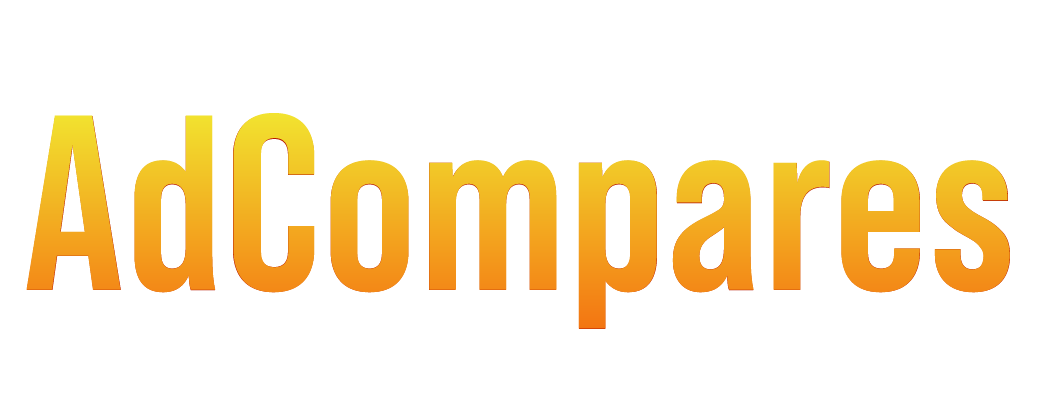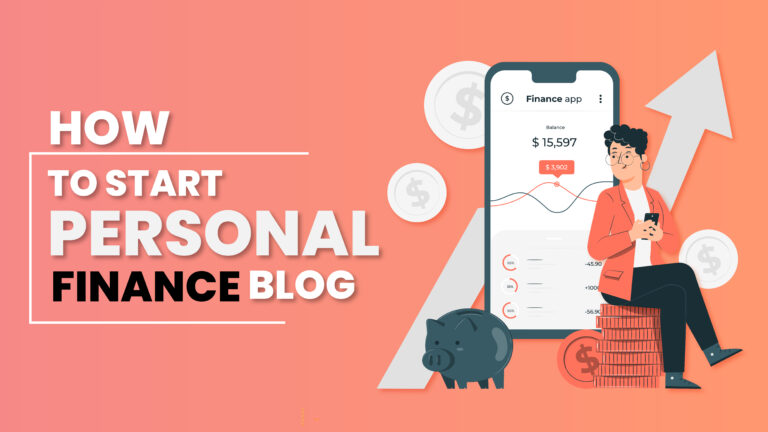Building a personal finance blog is one of the smartest ways to combine your financial knowledge with digital entrepreneurship. It allows you to share insights, educate readers, and establish authority in one of the most consistently profitable online niches. Whether your goal is to help others budget better, invest wisely, or achieve financial independence, a well-crafted blog can become both an influential platform and a sustainable income stream.
In 2026, starting a personal finance blog presents even greater opportunities. The rise of AI-driven content tools, evolving SEO strategies, and the growing demand for authentic, experience-based financial advice have reshaped the blogging landscape. Readers today don’t just want generic money tips; they seek trusted voices who share real, actionable experiences. With the right strategy, you can position yourself as that trusted resource and build a blog that grows in both impact and profitability.
What is a Personal Finance Blog?
A personal finance blog is an online platform where individuals share insights, strategies, and tips about managing money. These blogs cover a wide range of financial topics such as budgeting, saving, investing, debt management, and financial independence.
Unlike corporate finance websites, a personal finance blog focuses on real-life financial experiences helping readers make smarter money decisions based on practical advice. Many bloggers share personal stories about how they paid off debt, built savings, or achieved specific financial goals.
Starting a finance blog allows you to establish yourself as a credible voice in the money niche while building a community that trusts your perspective. It’s also an excellent way to generate passive income through affiliate marketing, sponsorships, and digital products.
How to Start a Personal Finance Blog (Step by Step)
1. Choose Your Niche Strategically
To launch a successful personal finance blog, start by choosing a focused niche. A niche defines your audience and helps your content stand out in a crowded space.
In 2026, micro-niches perform best. For example:
- Budgeting for Gen Z
- Crypto investing for beginners
- Frugal living for families
- Debt-free lifestyle strategies
Selecting a narrow focus improves SEO visibility and builds authority faster.
2. Research Your Niche with AI Tools
Use modern research tools to identify content gaps and trending topics.
- Use Google Trends and AnswerThePublic to discover popular finance-related queries.
- Explore Reddit and TikTok Finance to see what your target audience is discussing.
- Leverage ChatGPT or Jasper AI to brainstorm post ideas and generate outlines.
Analyzing what top finance blogs rank for and what users are asking helps you create unique, high-ranking content.
3. Define Your Target Audience Clearly
In 2026, personalization is key. Define your ideal reader persona — consider age, profession, income, and financial goals. Are they students learning budgeting? Or professionals seeking investment tips?
Tailor your content tone, visuals, and topics to fit their needs.
Example: “Smart Money for Millennials” or “Finance Simplified for Women Entrepreneurs.”
4. Select the Right Blogging Platform (2026 Edition)
Choose a flexible, SEO-friendly platform that supports AI and automation tools.
- WordPress (recommended): Offers full SEO control and plugin integration.
- Ghost: Lightweight, fast, and perfect for paid newsletter models.
- Webflow or Squarespace: Visually appealing and beginner-friendly.
Make sure your platform supports Core Web Vitals optimization, mobile-first design, and schema markup all crucial for 2026 Google rankings.
5. Create and Set Up Your Blog
Register a custom domain name that reflects your niche short, relevant, and memorable (e.g., SmartFinanceHub.com).
Purchase hosting from a reliable provider like Bluehost, Hostinger, or SiteGround for better site speed and uptime.
Set up SSL for trust and install essential plugins (SEO, speed, analytics, security).
6. Design for UX & Brand Identity
A clean, responsive design builds trust and improves SEO.
Use minimalist themes with fast loading times and mobile-first layouts.
Customize your color palette, typography, and logo to reflect your brand’s tone (professional, friendly, or modern).
Tip: Add AI chatbots or interactive budget calculators to boost engagement.
7. Create Essential Pages (for Trust & Compliance)
Make your site professional and compliant with privacy laws:
- About Page: Share your mission, expertise, and personal finance journey.
- Contact Page: Add a contact form or email for collaborations.
- Privacy Policy & Disclaimer: Required for monetization and Google AdSense.
- Resources Page (optional): List useful finance tools and affiliate links.
8. Develop a Data-Driven Content Strategy
Create a 3-month editorial calendar that aligns with trending keywords.
Mix different post formats:
- How-to guides
- Case studies
- Financial tool reviews
- Listicles
- Personal finance challenges
Use AI-assisted SEO tools like SurferSEO, Frase, or NeuronWriter to optimize readability and keyword density.
9. Write High-Quality, SEO-Optimized Content
Every post should deliver real financial value — actionable, transparent, and easy to follow.
Use conversational yet authoritative language.
Optimize for:
- Long-tail keywords (“how to save money in 2026”)
- Voice search (answer direct financial questions)
- Featured snippets (use structured headings and bullet lists)
Include statistics, visuals, and infographics to boost credibility and engagement.
10. Use Advanced SEO Techniques (2026 Focus)
- Optimize for E-E-A-T (Experience, Expertise, Authoritativeness, Trustworthiness).
- Add schema markup for articles and reviews.
- Use internal linking to guide readers and reduce bounce rate.
- Optimize images with alt text and WebP format.
- Build backlinks through guest posts and HARO (Help a Reporter Out).
11. Promote Your Blog with Multi-Channel Marketing
Don’t rely on Google alone promote through diverse channels:
- Social Media Marketing: Post on Instagram, LinkedIn, and TikTok Finance.
- Pinterest SEO: Use finance-related infographics for traffic growth.
- YouTube Shorts & Podcasts: Expand reach through video or audio content.
- Quora & Reddit: Share expert answers with backlinks.
Automation tools like Buffer and Later can help manage posts consistently.
12. Build an Engaged Email List
In 2026, email remains one of the most profitable traffic sources.
Create lead magnets like free eBooks, finance templates, or mini-courses.
Use ConvertKit or MailerLite to nurture subscribers with value-packed newsletters and updates.
13. Network and Collaborate
Build authority by networking with finance creators and experts.
Guest post, collaborate on podcasts, or co-host webinars.
These partnerships boost credibility, backlinks, and audience growth.
14. Monetize Your Blog (2026 Income Streams)
Diversify your income with modern monetization methods:
- Affiliate Marketing: Promote trusted finance tools and earn commissions.
- Sponsored Content: Partner with fintech brands.
- Digital Products: Sell eBooks, finance courses, or Excel templates.
- Paid Newsletters or Memberships: Offer exclusive premium insights.
- YouTube & Podcast Monetization: Expand your brand beyond text.
15. Track and Optimize Performance
Use Google Analytics 4, Search Console, and Hotjar for insights.
Track what topics perform best and update underperforming posts.
Use A/B testing for titles and CTAs to improve engagement rates.
16. Set Smart Goals for Growth
Establish measurable goals such as:
- Reaching 10K monthly visitors
- Building a 1,000-subscriber email list
- Ranking top 3 for high-value keywords
Use these benchmarks to track your progress and adjust strategy quarterly.
✅ Pro Tip for 2026:
Integrate AI tools, automation, and personalization in every stage — from SEO optimization to content creation and analytics. This not only saves time but helps you stay ahead in the competitive personal finance blogging industry.
Why Start a Personal Finance Blog in 2026
In 2026, the demand for credible, relatable financial advice is at an all-time high. With global economic changes, AI-driven tools, and more people pursuing financial independence, starting a personal finance blog in 2026 is a powerful way to share your expertise and build a sustainable income source.
Here’s why this year is the ideal time:
- High Search Demand: Topics like budgeting, saving money, and investing in 2026 are consistently trending on Google.
- Evolving SEO and AI Tools: New content tools make it easier to create SEO-friendly finance articles and analyze performance faster.
- Monetization Potential: The finance niche remains one of the most profitable, with top blogs earning through affiliate links, ads, and online courses.
- Growing Financial Awareness: More readers are looking for authentic financial voices rather than generic advice from corporations.
By starting your personal finance blog in 2026, you can position yourself at the intersection of financial education and digital entrepreneurship,helping others make smarter money decisions while growing your brand and income.
Conclusion
In 2026, starting a personal finance blogis one of the best ways to share your money management expertise, build authority online, and generate income. To get started, choose a clear niche such as budgeting, investing, or financial independence, and define your target audience. Know who you’re writing for and what financial problems they need solved. Next, select a reliable blogging platform like WordPress, set up your domain and hosting, and focus on publishing high-quality, SEO-optimized content that provides real value.
Promote your blog through social media, email marketing, and search engine optimization (SEO) to attract readers and grow your reach. As your audience expands, build a community around your content and explore monetization options such as affiliate marketing, ads, and digital products. With consistency and dedication, your personal finance blog can become a trusted platform that helps others achieve financial success while also building your own brand and income stream.
Frequently Asked Questions (FAQs)
What is the best platform for starting a personal finance blog?
WordPress is the best platform for personal finance blogs due to its flexibility and extensive customization options.
How can I choose a niche for my personal finance blog?
Choose a niche by considering your interests and expertise. Analyze popular topics to identify gaps in existing content.
How often should I publish new content?
Aim to publish new content at least once a week to keep your audience engaged and informed.
Can I monetize my blog immediately after starting it?
Monetization is possible, but focus first on building an audience. Once established, explore income streams like affiliate marketing.
How can I grow my blog’s audience?
Grow your audience by utilizing social media, networking with other bloggers, and engaging with your readers through comments and newsletters.


No Comments
whoah this blog is wonderful i like studying your articles. Keep up the great paintings! You understand, a lot of individuals are looking around for this information, you can help them greatly.
Your comment is awaiting moderation.